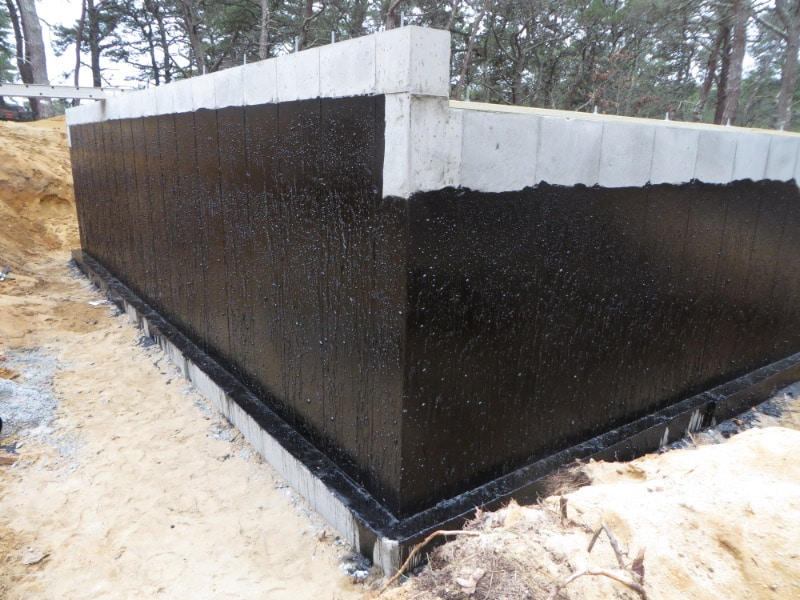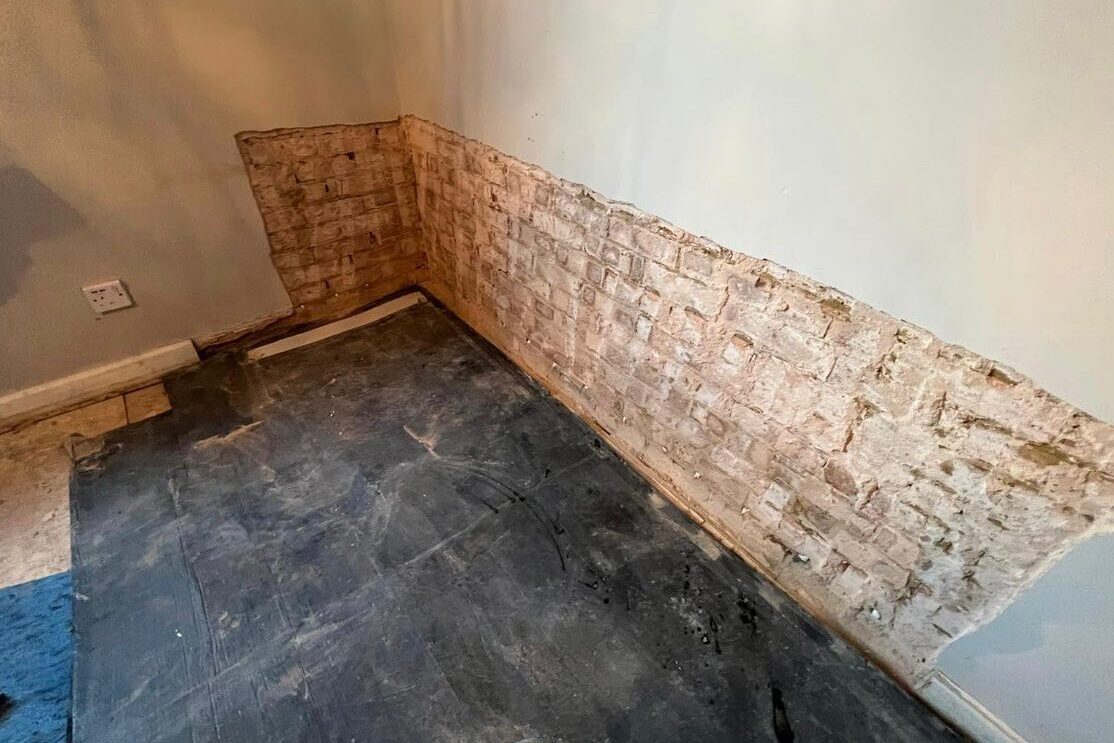Avoid costly repairs with proactive damp removal newcastle
Avoid costly repairs with proactive damp removal newcastle
Blog Article
Discovering the Numerous Techniques and Solutions for Effective Damp Proofing
Wetness in buildings positions considerable difficulties to both structural stability and interior air high quality. Numerous methods and options have actually emerged to combat this prevalent problem. From standard damp-proof membrane layers to ingenious chemical therapies, each method provides distinct benefits. Comprehending these alternatives is important for reliable dampness control. Picking the right solution depends on specific building conditions and requirements, triggering more exploration into the most effective damp proofing approaches readily available.
Understanding the Root Causes Of Moisture
Although wetness can occur from different resources, understanding these reasons is vital for effective removal. Frequently, moisture originates from three key resources: increasing damp, permeating damp, and condensation. Rising wet occurs when groundwater travels up-wards with porous products, such as brick or rock, often because of a lack of a reliable obstacle (mould removal newcastle). Penetrating wet is usually brought on by exterior variables, including roof covering leaks, faulty seamless gutters, or harmed walls, permitting water to infiltrate a building. Condensation, on the other hand, results from excess moisture in the air, often aggravated by poor ventilation and temperature differences, leading to water droplets basing on surfaces. Identifying these underlying concerns is essential, as each sort of moisture needs a tailored technique for remediation. Appropriate analysis helps in figuring out the most effective remedies, ultimately safeguarding the architectural stability of a structure and boosting interior air high quality
Typical Damp-Proof Membranes

Chemical Damp-Proofing Solutions
Chemical damp-proofing services provide an ingenious approach to avoid moisture breach in structures. These methods generally include the application of liquid chemicals that permeate stonework and develop an obstacle against rising moist. Frequently utilized chemicals include silanes, siloxanes, and various other water-repellent representatives that respond with surface area products to create a hydrophobic layer.The application procedure typically requires drilling openings into the walls, injecting the chemical remedy, and enabling it to treat. This technique is particularly useful for older frameworks where typical damp-proof membranes may be unwise. Chemical damp-proofing can be much less turbulent and extra economical than extensive restoration projects.While efficient, these remedies depend on proper application and environmental problems for peak performance. mould removal newcastle. Regular maintenance and monitoring are vital to ensure the durability of the damp-proofing therapy. Generally, chemical damp-proofing represents a versatile option for guarding buildings against moisture-related damages
Cavity Wall Surface Building Techniques
Tooth cavity wall building methods provide countless advantages, especially in wetness control and power effectiveness. By including an air void between 2 layers of stonework, these walls properly reduce water ingress while enhancing insulation. This combination not only shields structures from moisture but additionally adds to decreased power consumption.
Advantages of Cavity Walls
When considering reliable wet proofing techniques, the advantages of cavity walls stick out plainly. Dental caries wall surfaces contain 2 different layers, creating an air space that properly decreases moisture infiltration. This style minimizes the risk of wetness, as the external wall surface serves as a barrier against rainfall and water access. Additionally, tooth cavity wall surfaces improve thermal insulation, which adds to power efficiency by reducing heat loss. They likewise supply sound insulation, aiding to develop a quieter interior environment. The air space permits for air flow, which aids in moisture control and minimizes the possibility of mold and mildew growth. These advantages not just enhance the general convenience of a building however additionally contribute to its long life and architectural integrity.
Wetness Control Techniques
Effective dampness control strategies are essential in cavity wall surface construction to ensure lasting protection against wetness. One key approach includes the incorporation of weep openings, which promote water drainage from the tooth cavity, protecting against buildup. Furthermore, making use of breathable membranes can help handle dampness degrees while permitting trapped vapor to leave. Correct positioning of insulation is likewise important, as it should not block water drainage paths. Making certain that the outer leaves of the cavity wall surface are constructed with waterproof materials boosts overall resilience. Normal upkeep checks are vital to recognize any type of clogs or damage early, securing the structure's honesty. Inevitably, a mix of these techniques develops a robust protection versus wetness breach in tooth cavity wall surfaces.
Insulation and Energy Efficiency
Insulation plays a vital role in enhancing power effectiveness within dental caries wall surface building. By integrating protecting materials, these walls produce a thermal barrier that lessens heat loss and reduces energy consumption. Reliable insulation not just assists maintain a steady indoor temperature level but also mitigates the danger of moisture, as it avoids condensation within the wall cavity. Numerous techniques, such as the use of rigid foam boards or mineral wool, can be used to accomplish excellent insulation performance. Additionally, appropriate setup is necessary to assure that spaces and gaps are minimized, which can or else compromise energy effectiveness. Ultimately, a well-insulated cavity wall surface adds considerably to general sustainability and reduces heating and air conditioning costs for property owners.
Exterior Damp Proofing Approaches
Exterior wet proofing techniques are crucial for securing structures from moisture infiltration. Two efficient strategies include the application of water-proof membranes and the setup of French drains. These remedies assist minimize water accumulation and preserve the honesty of structures.
Waterproof Membrane Application
While various approaches exist for protecting against dampness access, the application of water-proof membrane layers stays a highly efficient exterior wet proofing method. These membrane layers are commonly made from products such as polyethylene, rubber, or customized bitumen, providing a durable obstacle against water infiltration. The setup process entails using the membrane to the external surfaces of wall surfaces or foundations, guaranteeing total coverage to avoid leakages. Proper bond and sealing at joints are vital to taking full advantage of effectiveness. Water resistant membrane layers can be used in different kinds, including fluid coatings and sheet membrane layers, allowing for adaptability based on the certain needs of the framework. This technique not just protects buildings from dampness but likewise enhances their longevity and structural integrity.
French Drain Installation
One reliable approach for handling groundwater and protecting against moisture accumulation around a building's structure is the installation of a French drainpipe. This drain click here system includes a trench loaded with gravel and a perforated pipe that reroutes surface water far from the foundation. Correct setup needs cautious preparation, guaranteeing that the drain slopes far from the structure to facilitate suitable water flow. Additionally, the location of the drainpipe is crucial; it must be placed in locations prone to merging or excess wetness. Routine upkeep, consisting of cleaning debris from the crushed rock and making sure the pipe continues to be unblocked, is important for long-lasting efficiency. Inevitably, a well-installed French drain can greatly decrease the risk of water-related concerns in foundations and basements.
Interior Waterproofing Strategies
Interior waterproofing techniques are important for securing a structure's inside from moisture seepage and potential water damage. These methods usually include the application of customized materials and strategies created to produce a moisture barrier within the framework. One common strategy is using water-proof coatings or sealers on walls and floors, which stop dampness from passing through surfaces.Additionally, mounting indoor water drainage systems, such as sump pumps, can effectively handle water buildup in cellars and crawl rooms. Another technique entails the use of vapor barriers, which are installed to inhibit wetness motion from the ground into living spaces.Moreover, dealing with any splits or spaces in wall surfaces or structures with ideal sealants ensures a comprehensive protection versus water intrusion. By applying these interior waterproofing approaches, homeowner can substantially decrease the threat of mold growth, structural damages, and various other moisture-related issues. Appropriate execution of these methods is essential for lasting defense and building stability.
Routine Upkeep and Examination Practices
Routine maintenance and inspection methods are important for ensuring the long-lasting effectiveness of wet proofing solutions in any kind of building. Regular checks allow homeowner to recognize very early indicators of dampness invasion, such as peeling off paint, mold and mildew development, and moldy odors. These indicators can signify underlying concerns that need instant attention.Inspections need to be conducted at the very least each year, concentrating on vulnerable areas like cellars, creep spaces, and exterior wall surfaces. During these assessments, homeowner must check out sealants, drain systems, and ventilation to validate they function correctly.Additionally, keeping downspouts and gutters is crucial, as clogged up systems can lead to water accumulation near the foundation. Executing a regular upkeep schedule, along with prompt fixings, can considerably expand the life expectancy of moist proofing measures and safeguard the structural stability of the building. Aggressive actions ultimately add to the total health and safety and security of the living environment.
Regularly Asked Questions
Just How Long Does Damp Proofing Generally Last?
The period of damp proofing effectiveness varies, commonly lasting in between 20 to half a century. Factors such as application top quality, environmental conditions, and upkeep techniques significantly influence the longevity of the moist proofing therapy.

Can I Damp Proof My Home Myself?
The private pondered the expediency of DIY damp proofing. With proper research and the appropriate products, it is possible. Nevertheless, they likewise recognized the importance of expert advice to assure durable effectiveness and protect against future issues.
What Are the Indications of Inadequate Damp Proofing?
Indications of inadequate moist proofing include consistent musty smells, noticeable mold development, peeling off paint, moist patches on wall surfaces, and timber decay - damp specialist newcastle. Home owners ought to resolve these concerns immediately to stop additional damage and health and wellness worries
Does Damp Proofing Affect Indoor Air Quality?

How Much Does Specialist Damp Proofing Price?
Expert moist proofing prices vary considerably, usually ranging from $1,000 to $5,000 relying on the home's dimension, the extent of the damp concern, and picked methods. Each circumstance requires a tailored evaluation for precise prices. Generally, dampness stems from three key resources: climbing wet, penetrating damp, and condensation. When considering efficient moist proofing methods, the advantages of cavity wall surfaces stand out prominently. Exterior damp proofing approaches are important for shielding structures from wetness seepage. While different approaches exist for preventing wetness access, the application of water resistant membranes continues to be a very reliable external wet proofing method. Signs of ineffective moist proofing include consistent stuffy smells, visible mold and mildew development, peeling off paint, wet spots on walls, and wood decay.
Report this page